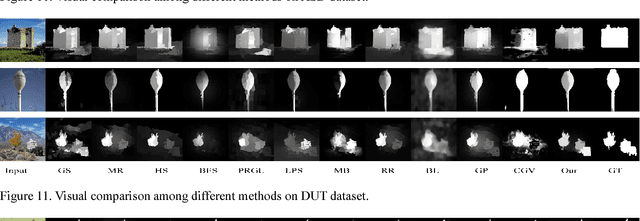A novel graph structure for salient object detection based on divergence background and compact foreground
Paper and Code
Nov 30, 2017



In this paper, we propose an efficient and discriminative model for salient object detection. Our method is carried out in a stepwise mechanism based on both divergence background and compact foreground cues. In order to effectively enhance the distinction between nodes along object boundaries and the similarity among object regions, a graph is constructed by introducing the concept of virtual node. To remove incorrect outputs, a scheme for selecting background seeds and a method for generating compactness foreground regions are introduced, respectively. Different from prior methods, we calculate the saliency value of each node based on the relationship between the corresponding node and the virtual node. In order to achieve significant performance improvement consistently, we propose an Extended Manifold Ranking (EMR) algorithm, which subtly combines suppressed / active nodes and mid-level information. Extensive experimental results demonstrate that the proposed algorithm performs favorably against the state-of-art saliency detection methods in terms of different evaluation metrics on several benchmark datasets.
 Add to Chrome
Add to Chrome Add to Firefox
Add to Firefox Add to Edge
Add to Edge